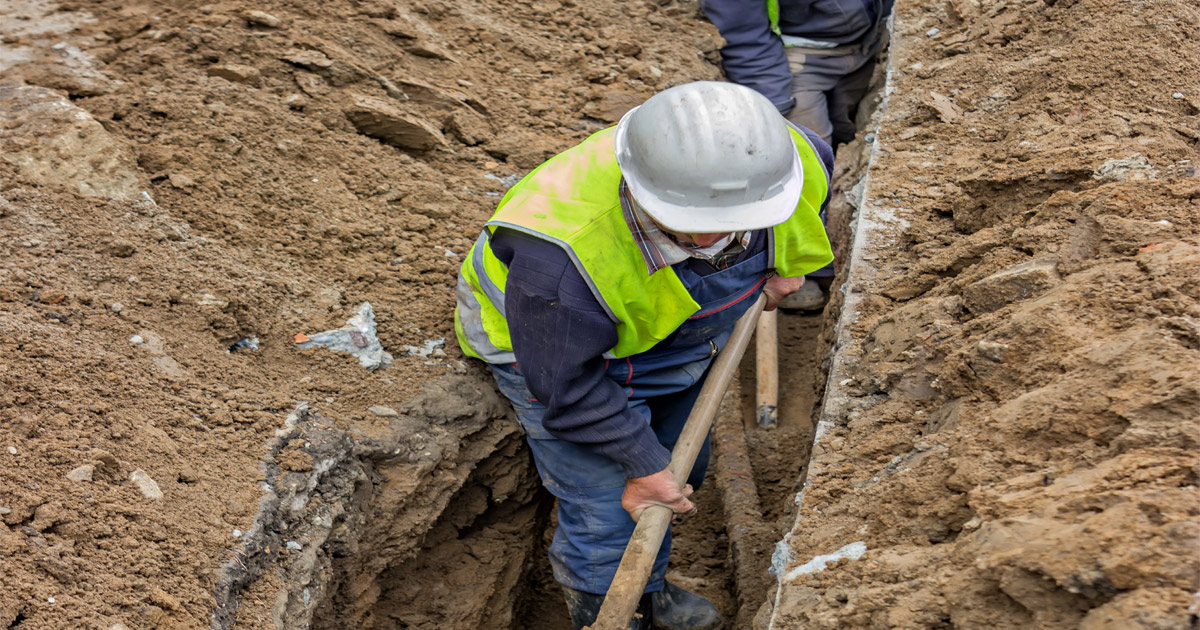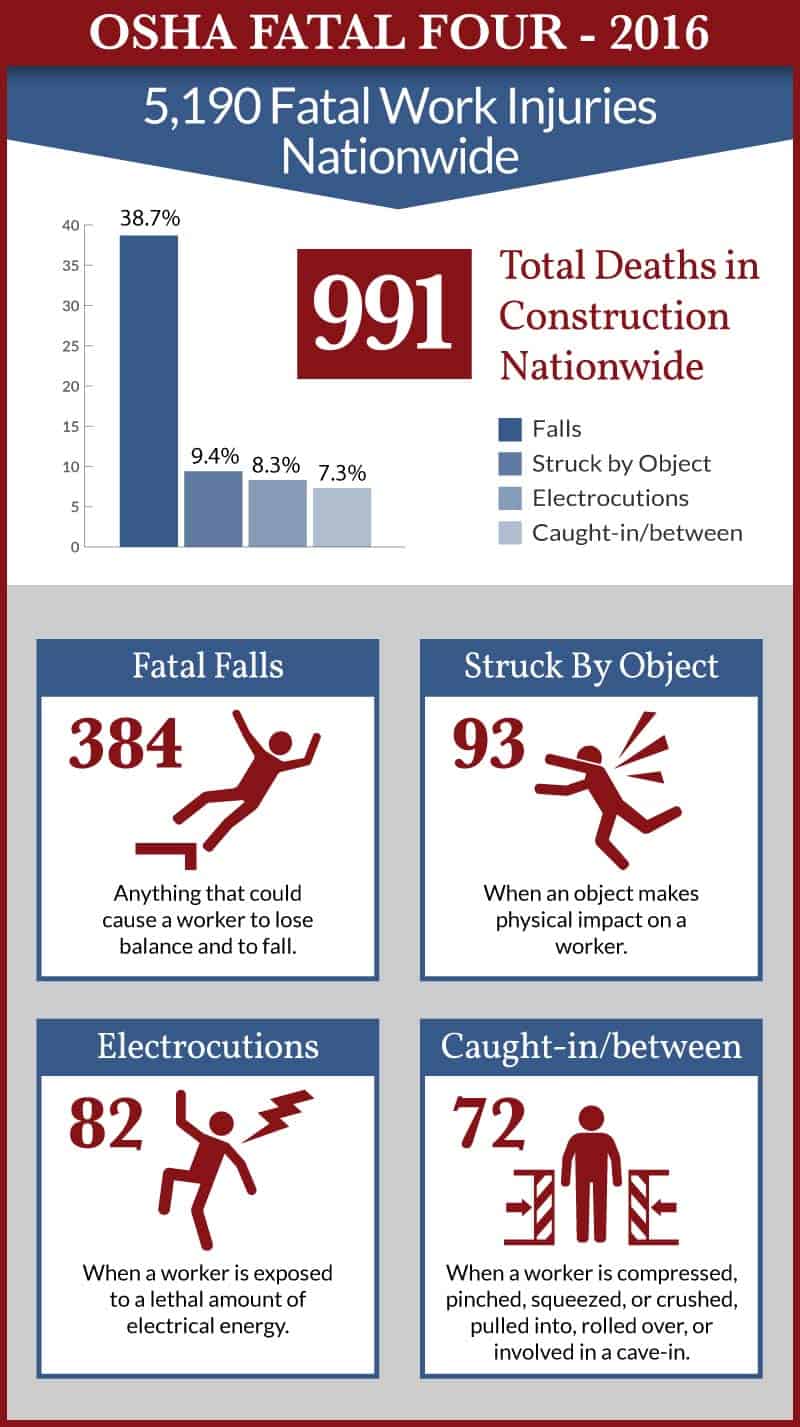Trench Safety Stand Down Week

Workers who choose a career in construction help people, businesses, and communities every day. They also engage in operations that can be hazardous without proper protocols and protection, such as trenching. For this reason, the National Utility Contractors Association (NUCA) and other organizations conduct an annual Trench Safety Stand Down Week. This year, the stand down will be held from June 15 to 19 and is dedicated entirely to discussing how workers who create narrow, man-made excavated depressions can reduce the risks involved with constructing trenches.
What are the Benefits to a Trench Safety Stand Down?
Trench Safety Stand Downs offer many advantages to both employers and employees who participate. Gathering workers, managers, supervisors, and teams together to talk about how to mitigate the dangers of excavating with proven techniques, such as shielding and sloping, lessens everyone’s chance of becoming hurt on the job.
All companies who participate in the Trench Safety Stand Down Week may be eligible to receive Certificates of Participation offered by organizations such as NUCA. Having this type of certificate assists the company in proving its commitment to laborers. The Occupational Safety and Health Administration (OSHA) also supports Trench Safety Stand Down Week. Current and future employees may appreciate working for businesses that make safety stand downs part of their regular operating procedures.
What Risks Do Trench Workers Face?
Currently, more than seven million men and women have chosen to be construction laborers who work in a variety of conditions and may perform different duties depending on the needs of residential, municipal, commercial, or government clients. Trench work is a common operation among certain types of construction workers. Not all people involved in construction are trench workers, but many find themselves performing excavations and working in trenches at some point in their working lives.
Trench laborers face unique risks because trenches pose problems other construction areas do not. For instance, a trench may be many feet deep. A relatively small amount of dirt weighs as much as a typical passenger car, so a minor trench collapse could quickly bury a worker under thousands of pounds of debris.
In addition to being caught in a trench cave-in, laborers working in excavated sites put themselves at risk of falling from the side of the trench. When in the trench, they must watch out for falling loads from above that contain anything from rocks and pebbles to large equipment. A deep trench may also tap into natural gases that could be toxic or deadly when inhaled.
How Do Trenching Accidents Occur?
Trenching accidents occur due to the unstable nature of trenches. By their design, trenches cannot withstand the weight of their sides without benching, sloping, or shielding. This is especially true of trenches that have a steep slope. If trenches have not been adequately shored with supports or a trench box, they will ultimately collapse. Sometimes this happens without warning, which can make a rescue or escape impossible.
Other reasons for on-the-job trenching disasters include trench workers who are operating alone in the trenches, laborers who are not wearing sufficient personal protective equipment (PPE), who do not have a safe exit from the trenches, and who are in trenches with excessive standing water. Trenching accidents can even be precipitated by fellow construction employees placing equipment and tools too close to the edge of the upper area of the trench.
What Injuries are Frequently Suffered by Trench Workers?
Trench laborers who experience a trench accident are at high risk of serious injury or death. As NUCA and OSHA statistics reveal, trench collapses take the lives of more than a dozen workers every year across the United States. In fact, getting caught in a cave-in regularly leads to a worker’s death, as it only takes a handful of minutes for an individual to suffocate after being partially or completely buried.
Laborers who survive trenching collapses and related dangerous trench incidents may deal with lifelong medical problems. It is not uncommon for trench workers involved in accidents to have a portion of their body crushed, lose limbs, suffer internal bleeding or injuries, or experience broken bones. Workers who live through trenching accidents that killed their teammates may require therapy for nightmares, depression, and other conditions related to survivor’s guilt or post-traumatic stress disorder (PTSD).
How Can an Injured Trench Worker Recover Compensation?
Trench workers who were injured due to a cave-in or another at-work incident should seek medical attention and place a claim for Workers’ Compensation benefits. They may also want to contact a Workers’ Compensation lawyer if their claim was denied or if the compensation was not enough to cover the damages suffered after a trench collapse.
How Can Trenching Accidents Be Avoided?
Trench collapses and other excavating accidents can be avoided; the key is to practice proactivity. For example, a trained engineer can help understand the logistics of the area to be trenched. From the soil and the climate, the engineer will be able to outline and mitigate potential risks to workers. A competent person should also be assigned to the worksite. Before and after every shift, the competent person evaluates the trench for any possible problems. A competent person is also charged with intervening if conditions make the trench an unsafe place for people to work. Without a competent person in charge, workers at trench sites are without a go-to authority.
When digging the trench, workers should use proven methods to shore up the sides of the narrow ditch to give it stability. In addition to shoring, workers may slope the trench to reduce the likelihood of a collapse. They should also ensure that debris and materials are at least two feet away from either side of the trench.
Ladders must be placed within 25 feet of every worker who is in a trench that is four feet or deeper, affording laborers the opportunity to safely get in and out of the trench as needed. The deeper the trench, the higher the need for testing of toxic, noxious gases and fumes. All laborers should wear the proper PPE and follow protocols according to their company guidelines and OSHA trenching standards and recommendations. Workers should never be in trenches alone.
Near-accidents of trench collapses should be reported and investigated, even if no one is injured. That way, future trench cave-ins can be mitigated. In fact, some companies use near-accidents as ideas for future training workshop curricula.
How Can Companies Recognize Trench Safety Stand Down Week?
Companies that want to participate in Trench Safety Stand Down Week have many options. First, they can schedule events at either trenching sites or at corporate headquarters. At the events, leaders and workers can work together to talk about issues dealing with trenching, review protocols, examine PPE, evaluate equipment, and name competent persons. Businesses that want to make safety stand down information available to their laborers well past the stand down week can hang posters and distribute literature related to trenching safety. Many organizations, including OSHA and NUCA, offer free checklists, videos, and displays to help promote improved trench and excavation safety on the job.
Bucks County Workers’ Compensation Lawyers at Freedman & Lorry, P.C. Advocate for Workers Injured in Trench Accidents
If you were injured while working on a trenching construction site, contact a Bucks County Workers’ Compensation lawyer at Freedman & Lorry, P.C. today. Call 888-999-1962 or contact us online to schedule a free consultation. Located in Philadelphia, Pennsylvania, Cherry Hill, New Jersey, and Pinehurst, North Carolina, we serve clients throughout Pennsylvania.
